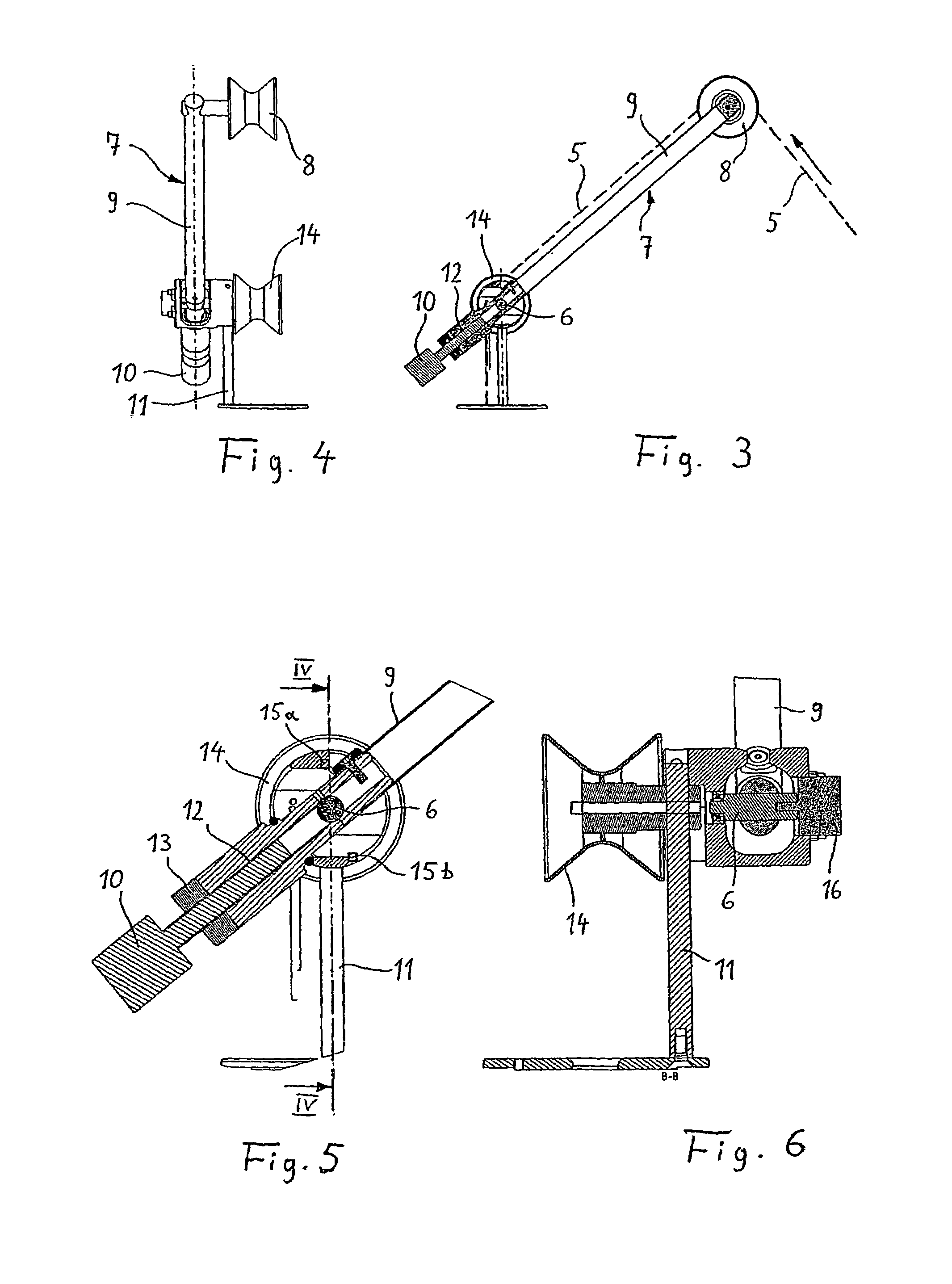Fiber conveying and discarding device to be connected to a carder
a technology of conveying and dumping device and carder, which is applied in the direction of lap winding device, lap forming device, textiles and paper, etc., can solve the problems of carder working speed, draw frame working speed, and carder working speed, etc., to achieve substantial freedom of vibration, low weight, and high strength
- Summary
- Abstract
- Description
- Claims
- Application Information
AI Technical Summary
Benefits of technology
Problems solved by technology
Method used
Image
Examples
Embodiment Construction
[0028]FIGS. 1 and 2 show in an overall illustration a carder 1, only partially illustrated, that has arranged downstream thereof a draw frame 2 relative to the sliver conveying direction; downstream of the draw frame a can coiler 3 is arranged. In the can coiler 3, a can is deposited, as is known in the art, into which can the sliver is placed in loops in a controlled fashion. In the present case, the can coiler 3 is provided with a can changer which provides space for a total of three sliver cans 4. The sliver is identified by reference character 5.
[0029]A controlled drawing of the sliver coming from the carder 1 is realized in the draw frame 2 in order to improve in this way the structure and in particular the uniformness of the sliver. Such draw frames are also known, for example, as disclosed in Swiss letters patent CH 692 349. A draw frame is often comprised of several roller pairs wherein at least the last roller pair is driven at a higher individually controllable speed. This...
PUM
| Property | Measurement | Unit |
|---|---|---|
| deflection angle | aaaaa | aaaaa |
| deflection angle | aaaaa | aaaaa |
| tension | aaaaa | aaaaa |
Abstract
Description
Claims
Application Information
 Login to View More
Login to View More - R&D
- Intellectual Property
- Life Sciences
- Materials
- Tech Scout
- Unparalleled Data Quality
- Higher Quality Content
- 60% Fewer Hallucinations
Browse by: Latest US Patents, China's latest patents, Technical Efficacy Thesaurus, Application Domain, Technology Topic, Popular Technical Reports.
© 2025 PatSnap. All rights reserved.Legal|Privacy policy|Modern Slavery Act Transparency Statement|Sitemap|About US| Contact US: help@patsnap.com



